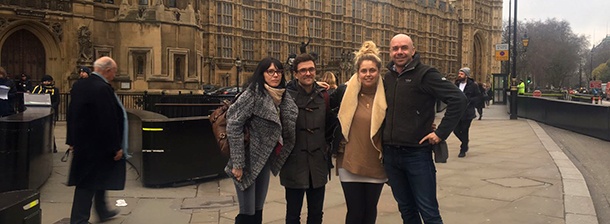Last Monday the Journeys by Design team travelled up to the houses of parliament ready to watch the debate on the UK ivory trade. Yes, there is still a legal ivory trade in the UK. If it’s news to you, you’re not alone.
We took the short journey up to London in order to check into the queue and get through the airport-style security leading into the houses of parliament where we joined another queue. And eventually, inches from the front of what I believe to be the last in a long series of subsequent queues, we were told the chamber was full. We made do watching from a screen in the side room.
My notes from the debate outlined the following:
- One of the main criticisms for blanket-banning the trade was that museums and art dealers deal in items made of ivory
- The UK has already partially committed to a ban in trading ivory – that dates to 1947 onwards
- Some traders have tricks to fake the age of ivory and so carbon-dating is the only way to properly check, which is expensive
- After about two hours into the debate, no one could give an actual figure as to how much carbon dating costs
- Somebody eventually suggested carbon dating was about ‘£500 a pop’
- Many speakers voiced their concerns over the possibility that their children would never see an elephant
The debate went back and forth. Some speakers presented solid facts. Some solid opinions seemed to widely change as the debate went on: some argued that 1900 should be the cut-off date for ivory dealing; others argued that since a number of influential art movements happened between 1900 and 1947, this would mean art that used ivory between these dates would be worthless. No one was completely against a ban. Only one speaker voiced his support for a total ban.
In summary, it almost seemed blindingly obvious that the reason things aren’t getting done about the problem of ivory are because the only people who are know anything about it are actually out in the field doing something about it. Many of the actual hard facts of the matter were left unanswered and swept to the side, while things that were largely off topic and less important seemed to take centre stage. Considering the level of the crisis, it was incredible to all of us that we continue to rely on representatives who do not seem particularly knowledgeable about the issues around ivory.
